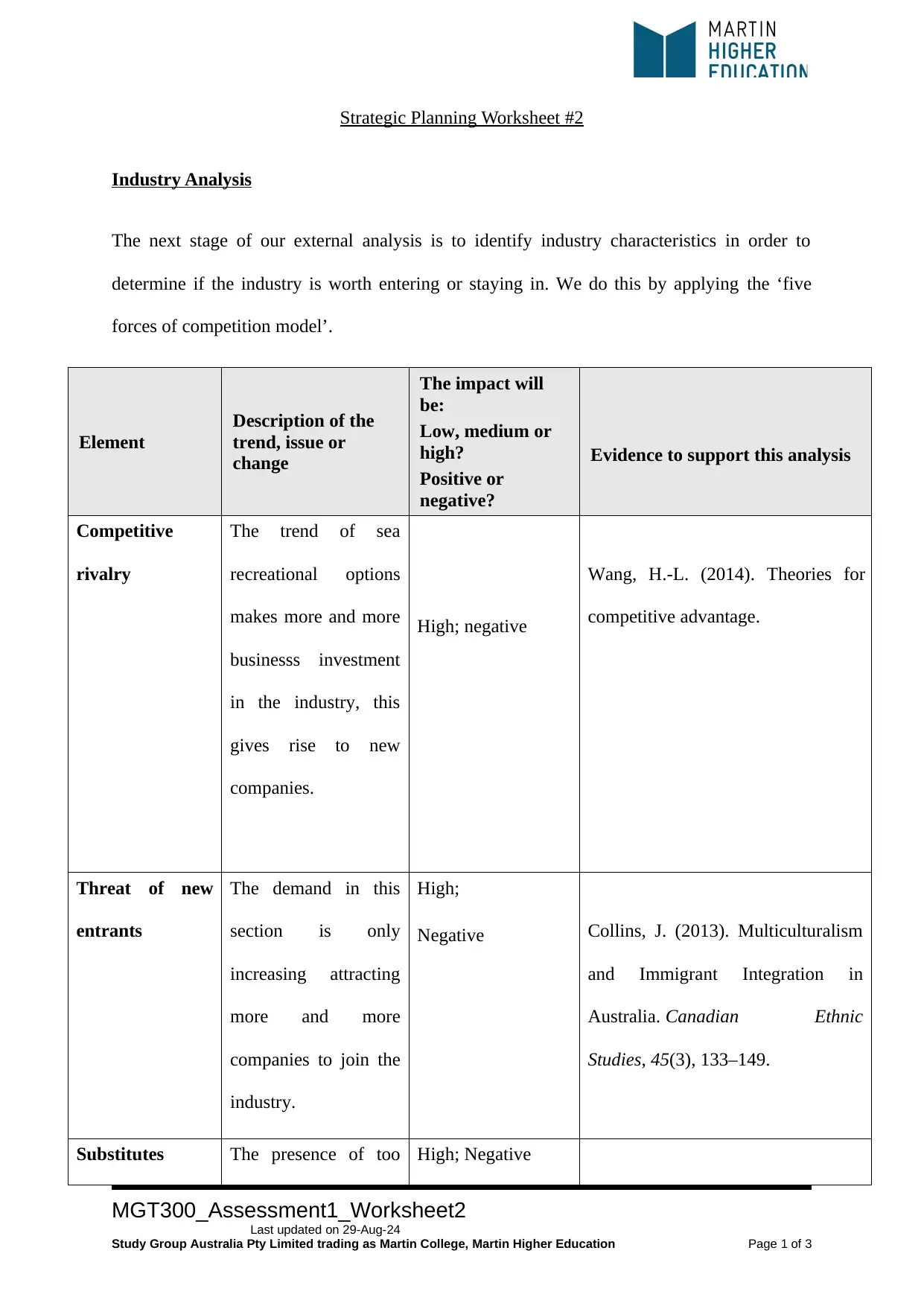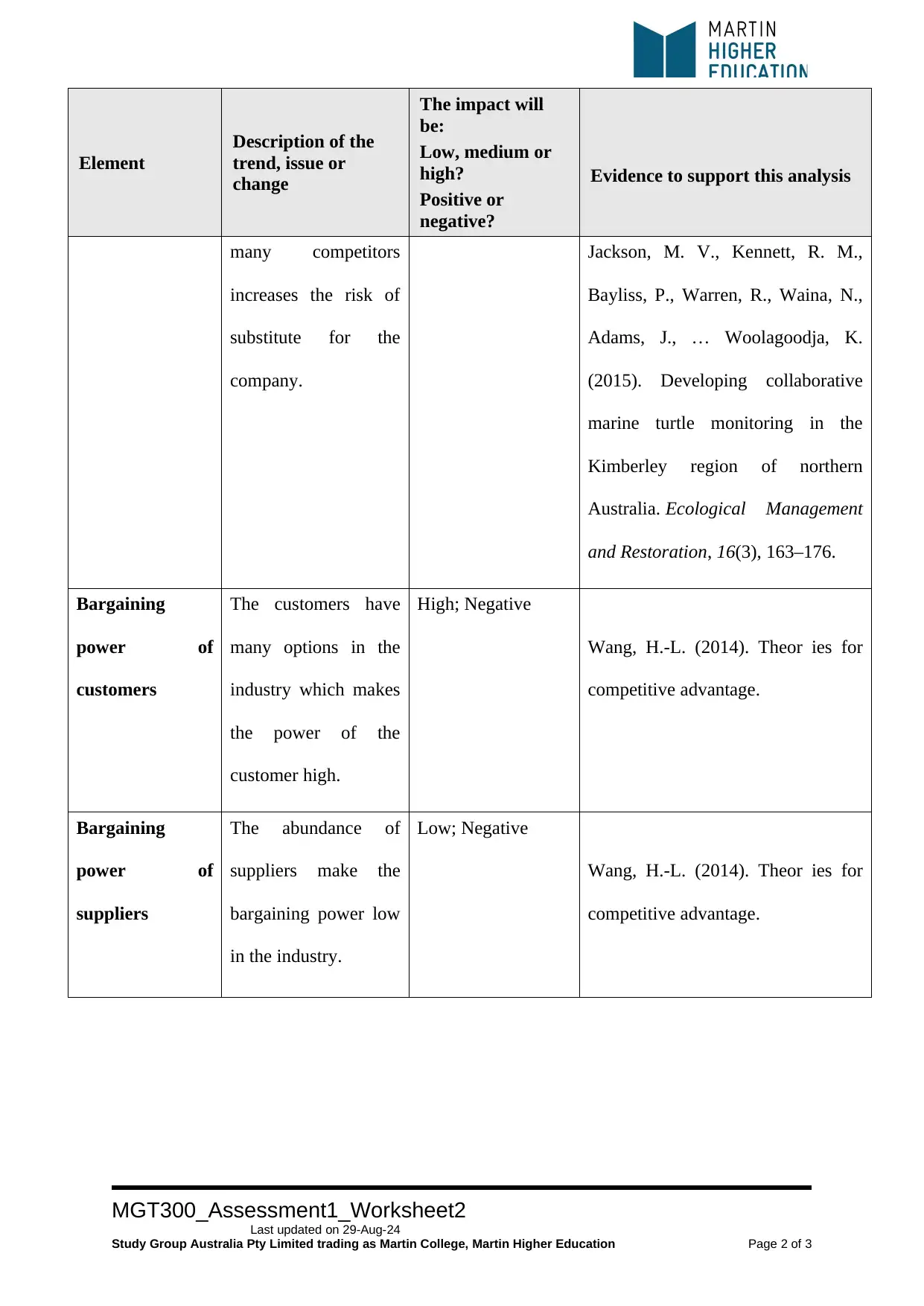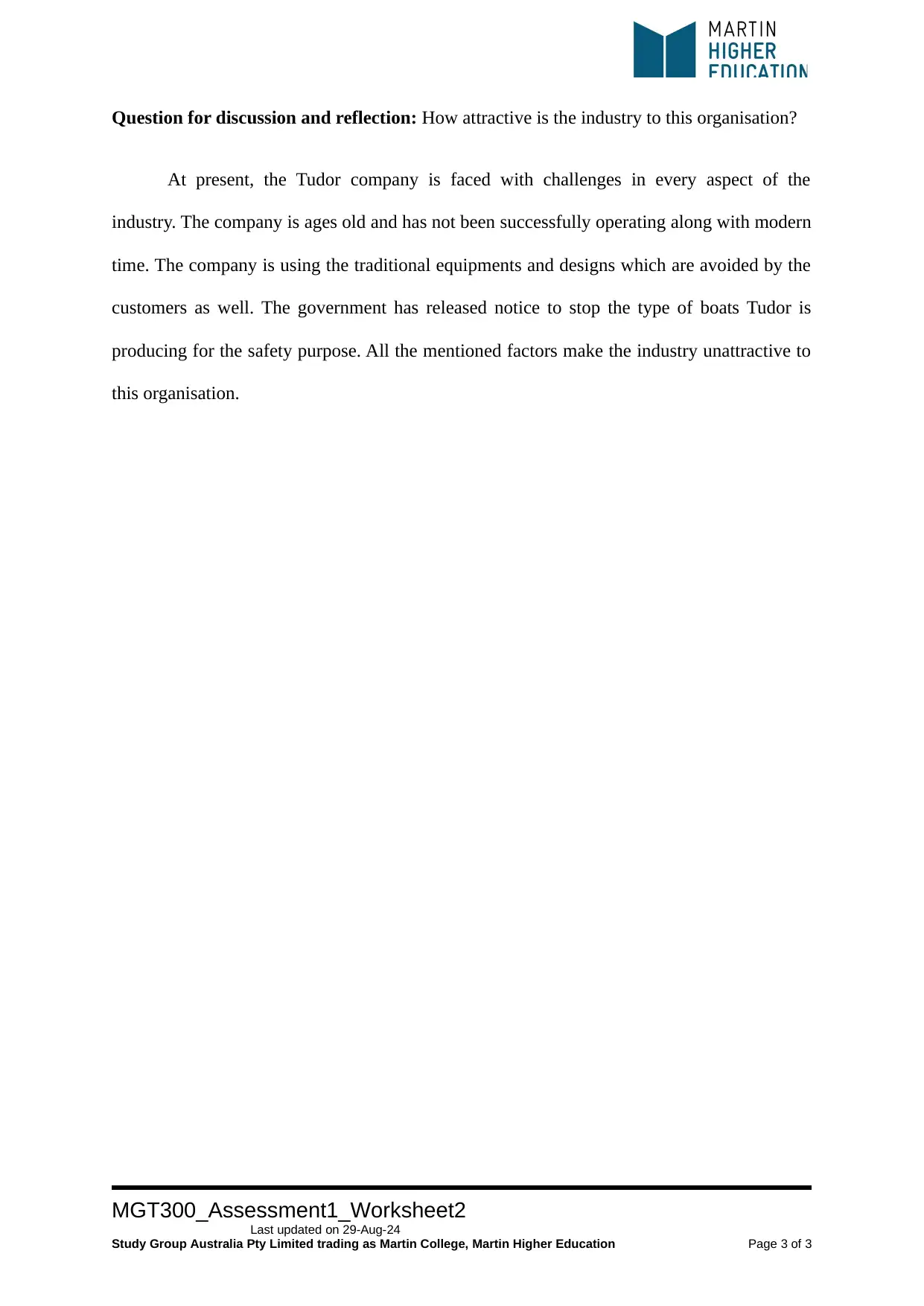MGT300 Strategic Planning: Industry Analysis Worksheet #2 Martin
VerifiedAdded on 2023/06/10
|3
|507
|222
Homework Assignment
AI Summary
This document presents a strategic planning worksheet focused on industry analysis, utilizing the five forces of competition model to assess the attractiveness of an industry. It examines various elements such as competitive rivalry, the threat of new entrants, the availability of substitutes, and the bargaining power of both customers and suppliers. The analysis evaluates the impact of each factor (low, medium, or high; positive or negative) and provides evidence to support these assessments. The worksheet concludes with a reflection on how attractive the industry is to a specific organization, noting challenges in adapting to modern trends, outdated equipment, and regulatory hurdles, ultimately deeming the industry unattractive for the Tudor company. Desklib provides a platform to explore similar documents and study tools for students.
1 out of 3










![[object Object]](/_next/static/media/star-bottom.7253800d.svg)